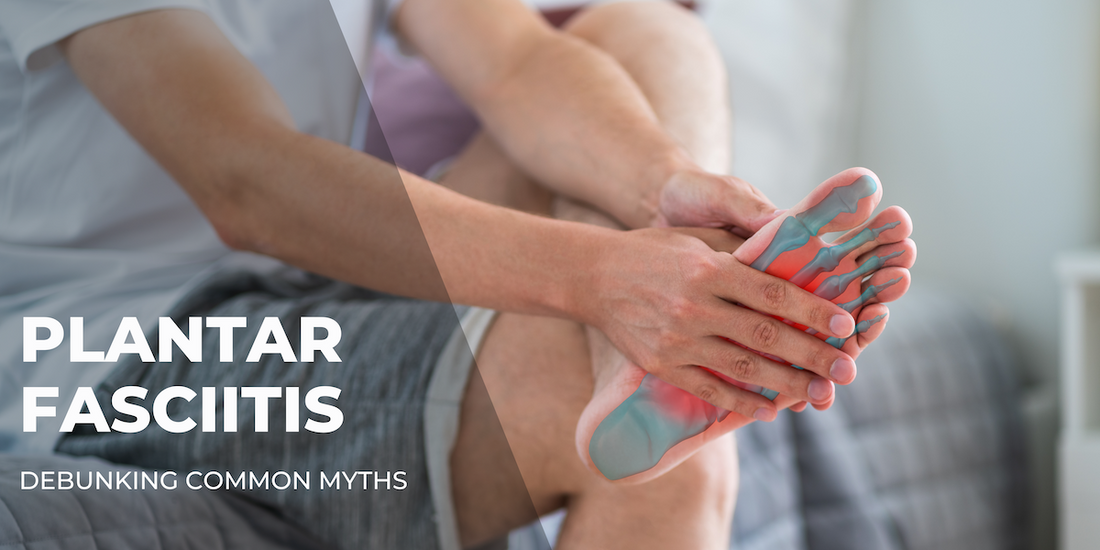
Debunking Common Myths About Plantar Fasciitis

Plantar fasciitis is one of the leading causes of heel pain. It is often caused by inflammation or irritation of the plantar fascia, the thick band of tissue connecting the heel to the toes. This condition is often most painful in the mornings or after periods of rest, causing discomfort for millions of people.
At Spacer Mobility, we aim to debunk some of the myths surrounding plantar fasciitis and provide effective relief solutions. Below, we’ll correct several common misconceptions, backed by medical findings and the use of our products.
Myth #1: Plantar Fasciitis Only Occurs in Those with Flat Feet
There is a common belief that flat feet are the sole cause of plantar fasciitis. While having flat feet can increase the risk of developing plantar fasciitis due to the added strain on the arch, it’s not the only cause. According to studies, only 10-20% of the population has flat feet, and plantar fasciitis can also affect people with normal or high arches. Foot mechanics, poor footwear, and repetitive strain are all factors that can contribute to plantar fasciitis, regardless of foot type.
People with varying arch types can relieve pain and prevent future issues by using tools like our Toe Spacer, which realigns the toes and reduces strain on the plantar fascia, and our EI8HTBALL, which improves flexibility. You can grab them here as a bundle!
Myth #2: You Should Avoid Walking if You Have Plantar Fasciitis
While excessive walking or standing can aggravate plantar fasciitis, avoiding movement altogether can stiffen the fascia and worsen symptoms. Moderate walking, combined with stretching and strengthening exercises, is vital for maintaining flexibility and promoting healing.
A study published in the Journal of Orthopaedic & Sports Physical Therapy emphasized the importance of active treatment for plantar fasciitis. It showed that stretching the plantar fascia, along with targeted exercises, significantly reduces pain. Incorporating mobility into your routine can help prevent stiffness and support recovery.
Myth #3: Plantar Fasciitis Always Affects Both Heels
Many people believe that plantar fasciitis always impacts both heels, but that’s not true! Plantar fasciitis can affect just one foot, and in fact, it’s quite common for only one heel to be painful. This condition occurs when the plantar fascia, a thick band of tissue that runs along the bottom of your foot, becomes irritated or inflamed due to overuse, poor footwear, or biomechanical imbalances. Often, one foot is more affected because of differences in how we stand, walk, or even favor one side of the body. While both heels can be impacted, plantar fasciitis can show up on just one side.
Myth #4: Plantar Fasciitis is Caused by a Heel Spur
One of the most common misunderstandings is that heel spurs are the primary cause of plantar fasciitis. While heel spurs — bony protrusions on the underside of the heel — are often seen on X-rays of people with plantar fasciitis, they aren’t the root cause of the pain. Research has shown that 10-38% of the general population may have heel spurs, but not everyone experiences pain.
Plantar fasciitis results from stress and inflammation of the plantar fascia, not the heel spur itself. The focus should be on reducing inflammation and improving foot mechanics rather than surgically removing the spur.
Our Toe Spacer and EI8HTBALL help relieve tension in the plantar fascia. These tools help restore alignment and reduce pressure on the fascia, promoting recovery. Pair these with our comprehensive Plantar Fasciitis Program, and you’ve got an effective, fast-track solution to eliminating plantar fasciitis.
Myth #5: Surgery is Inevitable if Plantar Fasciitis Doesn’t Go Away
Many people fear that they will need surgery if their plantar fasciitis doesn't resolve. However, surgery is typically a last resort and conservative treatments are effective for most patients. A review published in Foot & Ankle International found that 90-95% of people with plantar fasciitis recover without surgery when using treatments like physical therapy, exercises, and stretching.
Our foot mobility tools are designed to help you avoid invasive procedures by encouraging proper alignment and reducing inflammation naturally. Combined with our Revive Balm, which soothes and cools the affected area, these products effectively promote long-term healing.
Plantar fasciitis is manageable, but the myths surrounding it can delay effective treatment. We offer tools like Revive Balm and the Plantar Fasciitis Kit, which includes the Toe Spacer, EI8HTBALL, and our Plantar Fasciitis Program to help relieve pain, improve flexibility, and prevent future flare-ups. Backed by medical research, these solutions provide an accessible, non-invasive path to recovery.
Send us an email if you have any questions!
References:
- Buchbinder R. Plantar Fasciitis. The BMJ, 2004.
- Tong KB, Furia J. Economic burden of plantar fasciitis treatment in the United States. American Journal of Orthopedics, 2010.
- DiGiovanni BF, et al. Plantar fascia-specific stretching exercise improves outcomes in patients with chronic plantar fasciitis. Journal of Bone and Joint Surgery, 2003.
- Lemont H, et al. Plantar fascia pathology in chronic plantar fasciitis. Foot & Ankle International, 2003.
- Barrett SL, O'Malley R. Plantar fasciitis and other causes of heel pain. American Family Physician, 1999.
